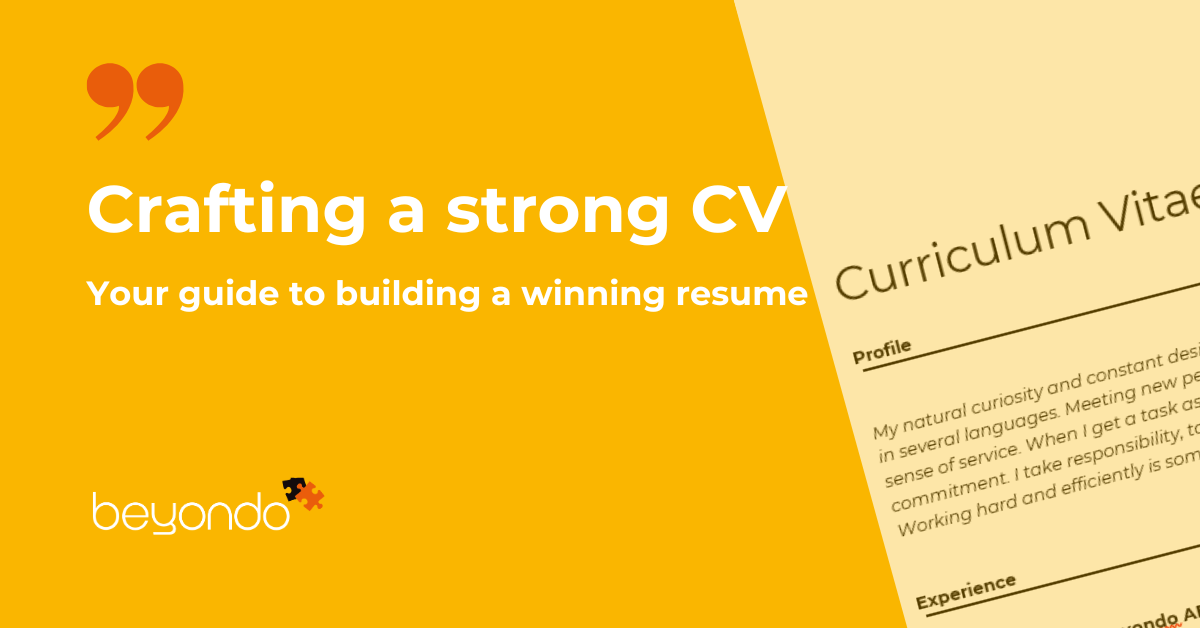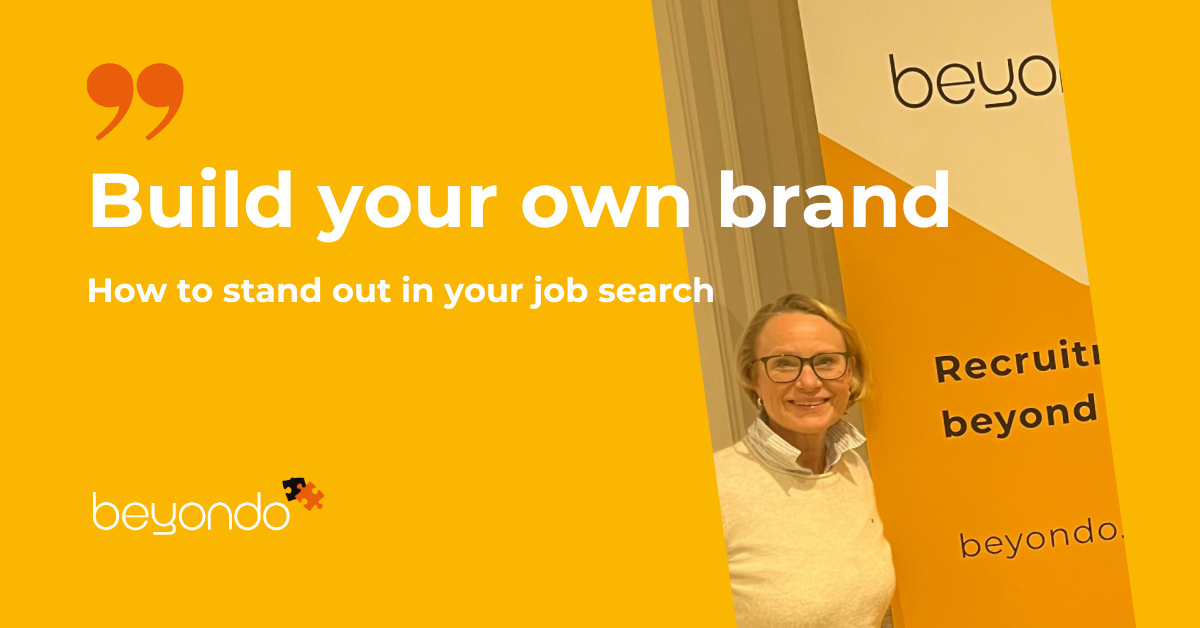Crafting a Strong CV: A Recruiter's Perspective
Imagine you're a recruiter, sifting through a pile of resumes. What makes one CV stand out from the rest? As a recruitment expert at Beyondo, I've seen countless resumes and profiles, and I've helped many job seekers succeed in the job market. Here are some of my best tips, drawn from years of experience, to help you craft a strong CV and choose the right photos to elevate your online presence.
The Journey Begins: Crafting an Effective CV
Your CV is your ticket to getting noticed by potential employers. Picture this: you're applying for your dream job, and your CV needs to make a lasting impression. Here's how you can make it happen:
Professional Format: Start with a clean, professional format (preferably a Word document). Imagine a recruiter picking up your CV and being impressed by its clarity and organisation. Use clear headings and bullet points to make it easy to read. Avoid clutter and fancy designs—simplicity is key!
Tailored Content: Customise your CV for each job application. Think of it as tailoring a suit to fit perfectly. Highlight the skills and experiences that are most relevant to the position. This shows the recruiter that you've taken the time to understand the job requirements.
Quantifiable Achievements: Include specific achievements and quantify them where possible. For example, "Increased sales by 20%" or "Managed a team of 10." Numbers speak louder than words and give a clear picture of your impact.
Keywords: Use keywords from the job description to help your CV pass through Applicant Tracking Systems (ATS). Imagine your CV as a key that unlocks the door to the interview room. Keywords are the teeth of that key. When using AI to craft your resume, make sure you make it your own. Remember: Own your brand!
Contact Information: Ensure your contact information is up-to-date and visible. Include your LinkedIn profile and personal website if applicable. Make it easy for recruiters to reach out to you.
Professional Summary: Start with a professional summary. 'About me' section, which briefly describes your background, skills, and career goals. Where are you now, and where do you want to go? What is your contribution to a potential company? Why you!? Think of it as your elevator pitch—short, sweet, and to the point.
Education and Certifications: List your education and any relevant certifications. Include dates and institutions. This section is your academic footprint.
Work Experience: Detail your work experience, focusing on responsibilities and achievements. Use action verbs to describe your roles. Imagine you're telling a story of your career journey—make it compelling.
About your previous company: I would also recommend including 1-2 words about the company you worked for. For example, if it is a relatively unknown company in Sweden, help the recruiter by explaining what the company does: 'Company XYZ, a significant player in food retail distribution,' or something similar.
Skills: Include a skills section that highlights your key competencies. Be honest and avoid exaggeration. This is where you showcase your toolkit.
References: Mention that references are available upon request. You can also include testimonials from previous employers or colleagues. Think of this as your credibility stamp.
For more detailed tips on crafting an effective CV, check out our resume writing guide.
The Visual Impact: Choosing the Right Photos
I would recommend having a representative professional photo on LinkedIn rather than on your resume. If a recruiter is interested in seeing your photo, they can turn to LinkedIn. A picture is worth a thousand words, especially in the professional world. Imagine a recruiter visiting your LinkedIn profile or personal website and being impressed by your professional photos. Here's how to choose the right ones:
Professional Headshot: A high-quality headshot of you looking confident and approachable. This can represent the importance of a strong LinkedIn profile. Imagine this photo as your first handshake with the recruiter.
A good way to ensure you choose the right photo is to ask your surroundings what they think of the photo. You might think it looks professional, but it is also important how it is perceived by others.
One thing to consider is not to include a photo on your resume.
That is because a recruiter might only look at your resume for 7-8 seconds. If you have a photo on your resume, it can catch the reader's interest, which might distract them from your skills. You want them to focus on your qualifications, not your appearance!
"One thing to consider is also not to include a photo on your resume."
Networking Event: An image of professionals networking at an event, which can illustrate the importance of engaging in industry-specific communities. This photo shows you're active and connected in your field.
Work Portfolio: A screenshot or photo of a well-designed personal website or online portfolio, showcasing the importance of having a professional online presence. This visual tells the story of your work and achievements.
Social Media Engagement: An image of someone engaging on social media platforms, highlighting the strategic use of social media for job hunting. This photo demonstrates your ability to connect and engage with others.
Content Creation: A photo of someone writing a blog or creating content, emphasising the value of consistently sharing valuable content. This visual shows you're a thought leader in your industry.
For more tips on choosing the right photos, visit our visual branding guide.
Remember - it is Your Story, Your Brand
Crafting a strong CV and choosing the right photos are essential steps in building your personal brand and standing out in the job market. By following these tips, you can strengthen your online presence and attract potential employers.
Remember, your CV and photos are more than just documents and images—they're the story of your professional journey. Make it compelling, make it authentic, and make it yours.
For more detailed advice on building your personal brand, check out our personal branding guide.
Good luck!
Written by Karin Björkman

